Is Iceland Worth Visiting in Winter? What You Must Know
So, is Iceland worth visiting in winter? If you’ve been daydreaming about snow-globe-esque landscapes, chasing the Northern Lights, or relaxing in the steaming Blue Lagoon, you’re probably thinking duh, Katie, of course Iceland is worth visiting in winter!
And yes, winter in Iceland is absolutely magical – but it also comes with its own set of challenges, especially for solo travellers, that very few people will tell you about.
So in this blog post, I’m going to give you all the facts (yes, even those less glamorous ones!) to help you figure out whether it’s the right trip for you – and how to make the most of it when you arrive!
I travelled to Iceland solo in the middle of January. I’ve walked back from a Northern Lights tour, alone at 3am. I’ve navigated (and slipped on!) icy streets. I’ve seen torrential rain, heavy snow, biting wind and blue skies in one afternoon. And I’ve also marvelled at majestic glaciers and watched the sunrise over the tectonic plates.
That’s why I can give you the honest, no-fluff version of what it’s really like in Iceland in winter. And no, not just the Instagram highlights, but the bits no one warns you about, too.
I’ll walk you through those highs (Northern Lights, frozen waterfalls, cosy cafés) and also the tougher realities (short daylight hours, icy roads, unpredictable weather), so you can decide for yourself whether winter in Iceland deserves a spot on your travel bucket list!
Disclaimer: Some of the links on this blog are affiliate links. That means if you click on one and make a purchase, I may earn a small commission – at no extra cost to you. I only recommend products, places and services I genuinely love and use on my own solo travels. Thank you for supporting my adventures so I can continue to provide free content on this blog! 💛
Why Winter in Iceland Isn’t Like Anywhere Else
Winter in Iceland is definitely not your average cold-weather trip!
This is a country of spectacular scenery around every bend, from frozen waterfalls and black sand beaches, to admiring geysers and soaking in hot springs while the world around you is covered in ice.
But of course, all of that extreme beauty brings with it extreme conditions.
So if you’re wondering, is Iceland worth visiting in winter?, my short answer is yes – but only if you know what you’re getting into (and that’s what this guide will tell you, so you’re in the right place!)
Winter in Iceland offers experiences you won’t find anywhere else in Europe. You’ve probably seen those dreamy photos of the Northern Lights or glaciers on Instagram, but being there in person is a totally different story.
Iceland in winter is raw, wild and unforgettable. And I promise that the memories from your trip will stick with you for a lifetime.
But it’s not always easy. Storms roll in fast, the daylight hours are short, and sometimes the thing you came for doesn’t even happen (I’ll explain in a minute!)
In my experience, winter in Iceland forces you to slow down, embrace unpredictability, earn a master’s degree in problem solving (!!), and find magic in the unexpected.
Katie’s Top Tip: Don’t book this trip to Iceland in winter expecting everything to go perfectly. If you go into this trip with a dream of adventure, rather than a checklist, you’ll have a much better experience.

Benefits Of Visiting Iceland In Winter
Pro 1. The Northern Lights
Okay, let’s start with the big one!
The Northern Lights are without doubt one of the top reasons (if not the top reason!) why Iceland is so popular in winter – and yes, I can confirm that seeing them is one of the best experiences I have ever had!
And the long, dark nights of winter in Iceland, between late September and April, give you the best chance to see the Northern Lights.
But here’s the thing that none of the tour advertisers like to admit outside of their small print…
The Northern Lights are never, ever guaranteed. Not even in Iceland in winter.
When I went to Iceland in January, I bundled up, joined a very expensive tour and stood in the freezing cold, questioning my life choices (!!)… only to see what looked like…
A faint, fuzzy orange cloud.
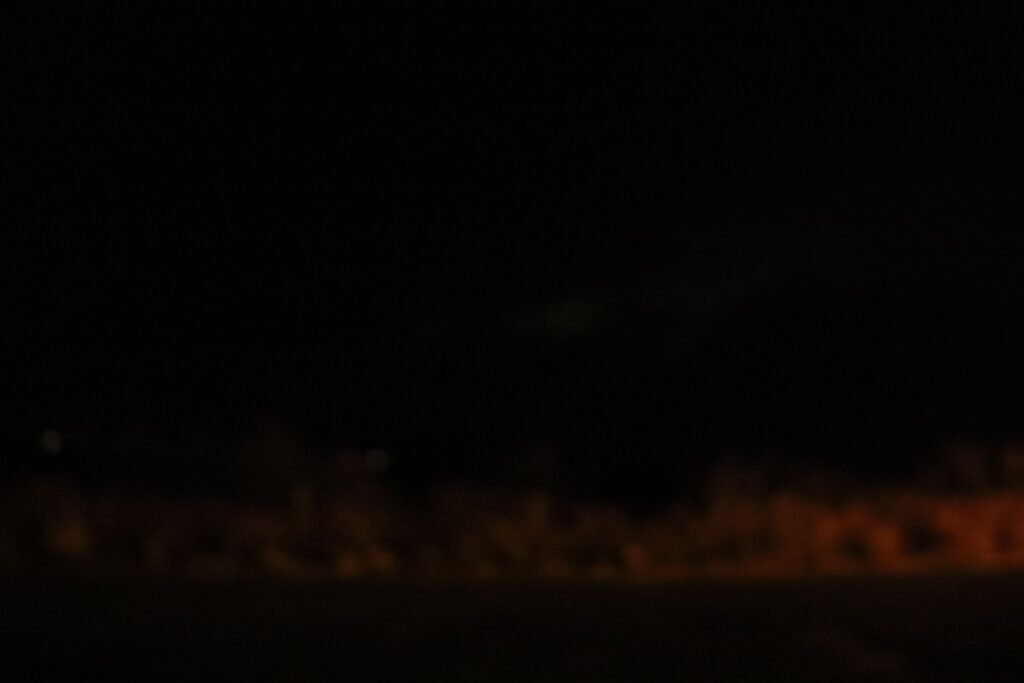
Yep, that was it. And no, I didn’t get my money back because apparently that counts as a sighting!
After waiting for hours, we gave up, and I had to walk back to my hotel in Reykjavík, alone at 3am, feeling very disappointed by the experience (but yes, I felt completely safe walking alone through the city at night. That was a win, at least!)
I’ve since seen the lights multiple times in Norway, and they were magical, so it is definitely a pro for visiting Iceland in winter!
But I now always tell people: if the Northern Lights are the only reason you’re going to Iceland, you might end up disappointed. So please treat them as “the cherry on top” of your trip, but never as the sole purpose.
That way, you’ll still have an amazing time if they don’t play ball!
Katie’s Top Tip: Book a Northern Lights tour that offers hotel pickup and drop-off if you’re a solo female traveller. While I felt totally safe walking through Reykjavík alone at 3am, having a drop-off included would’ve definitely been nicer!
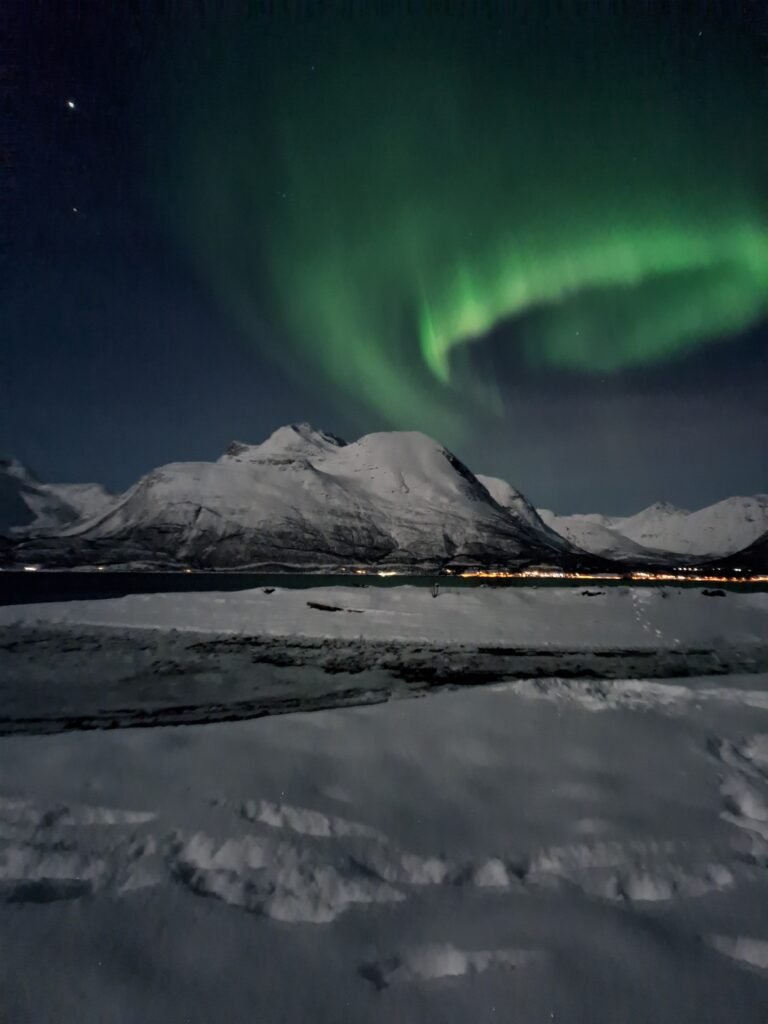
Pro 2. Fewer Tourists
Another reason winter in Iceland is well worth it? You get to experience Iceland without the huge summer crowds!
In July and August, the Golden Circle is literally heaving with tour buses and the Blue Lagoon feels like a theme park rather than a relaxing spa afternoon.
But in January, my experience was that I was standing in front of some of Iceland’s most iconic waterfalls, like Skógafoss or Seljalandsfoss, with only a handful of other travellers around me.
That may not matter as much to you as it does to me, but for me, that made my trip!
At one point, I was standing in the heart of the Golden Circle, watching the sunrise over the tectonic plates, with only a few other people nearby.
It felt like it was just me and nature in that moment, and it was so magical!
You’re not elbowing through crowds or fighting for the best photo spot, so the whole experience feels so much more relaxed.
Katie’s Top Tip: Book your accommodation and tours early, even in winter. Things are less busy, sure, but many businesses scale back operations, so good options fill up quickly.
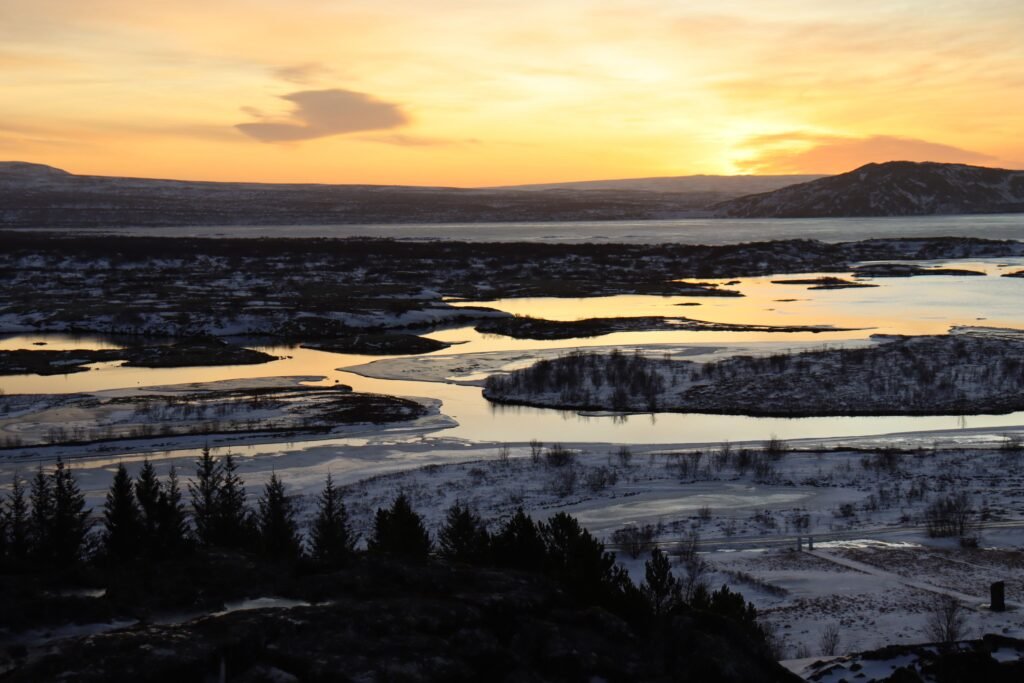
Pro 3. Lower Costs
Let’s be real here: Iceland is seriously expensive.
From food and fuel to accommodation and guided tours, the prices are often insane (thanks to the high demand for tourism in Iceland).
But winter is one of the rare times when you’ll actually find Iceland slightly more affordable.
Flights are a lot cheaper between November and March (not including the Christmas holidays). If you go after Christmas, it’s cheaper still.
Hotels in the city centre also lower their rates outside the peak summer months (again, especially so after Christmas).
So if you’re asking yourself, is it worth visiting Iceland in January, February or March, the savings alone definitely make it a smart option to consider if you’re budget-conscious!
But of course, I’m not gonna sugarcoat it. “Cheaper” in Iceland doesn’t mean cheap.
And if you choose to go for all guided tours during your trip (like I did), they are not exactly budget-friendly either.
You’re more likely to find deals at this time of year, but for the best tour experiences, be prepared to splurge (and then cut back on things like flights, accommodation, food, etc, taking advantage of the low season savings).
Katie’s Top Tip: Save money by booking accommodation with kitchen access. Buying groceries and cooking at least one meal a day is one of the best ways to cut costs without missing out on the big experiences.

Pro 4. Landscapes Out of a Snow Globe
Bottom line: Iceland is just so beautiful in winter, and the landscapes are unlike anything else in Europe!
From striking black sand beaches dusted with snow, to waterfalls frozen mid-cascade, to lava fields covered in frost. Even Reykjavík turns into a cosy winter postcard, with colourful houses and, of course, the beautiful Rainbow street.
For me, this was the biggest surprise.
I expected cold and darkness and I knew theoretically that Iceland is beautiful, right?
But I definitely didn’t expect the kind of raw beauty that can only still be witnessed at this time of year. The photos really don’t do it justice!
Katie’s Top Tip: Embrace the short daylight hours with smart planning. If you’re exploring alone, plan your outdoor activities between 11am and 3pm, then enjoy Reykjavík’s cosy cafés or hot springs in the evenings. Or if you’re going for tours, choose options that do the bulk of their driving in darkness so you maximise daylight.
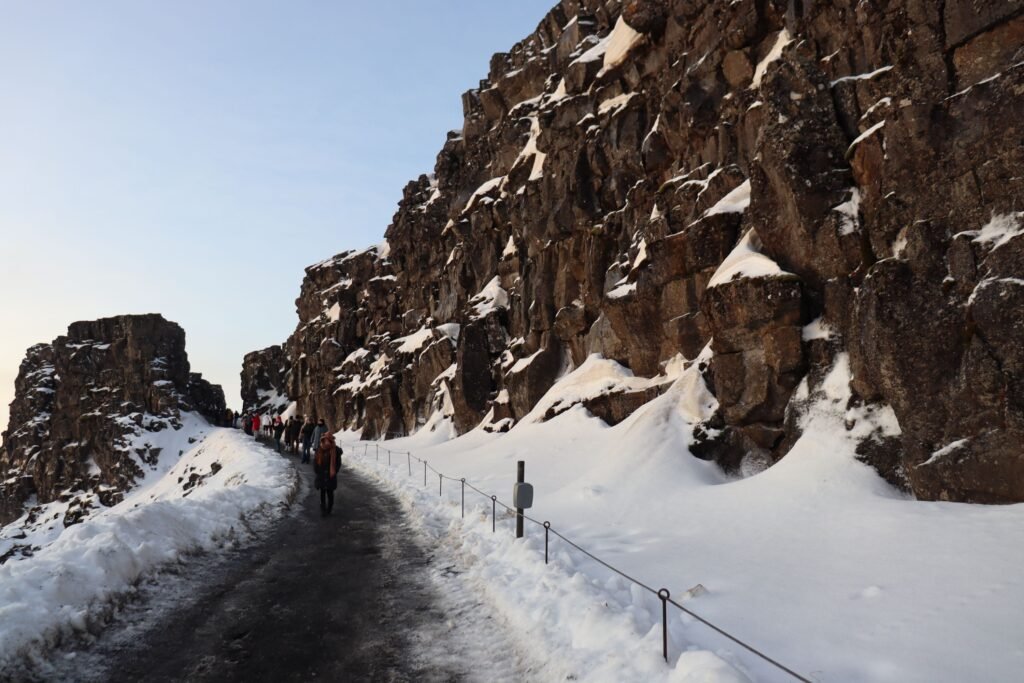
Pro 5. Hot Springs in the Snow
Need I say more?!
If you’re wondering, is Iceland worth visiting in winter, just imagine freezing cold temperatures and snow falling down, all while you relax in the naturally hot, thermal water of a hot spring!
Yes, it’s touristy and cliché, but it ended up being one of the highlights of my entire trip.
The famous Blue Lagoon is the obvious choice (this is what I did!), but it’s not your only one, as there are plenty of other geothermal pools in Iceland:
As a solo traveller, I didn’t feel awkward alone either.
I joined up with some of the sweetest girls from my small group tour to the Golden Circle and Blue Lagoon, and we got drinks and did the face masks together.
But regardless of that, the atmosphere felt relaxed, safe and very welcoming. Everyone here is just there to do their own thing and enjoy the moment, so no one is judging you for being on your own.
Just make sure to book popular spots like the Blue Lagoon in advance, especially in winter when fewer daylight hours means fewer available slots.
Katie’s Top Tip: Bring a hair mask or conditioner to apply before and after. Geothermal water can be tough on your hair. You can thank me later!

The Cons Of Visiting Iceland in Winter
So, is Iceland worth visiting in winter? As I’m sure you’ve guessed, my answer is yes – but not without being aware of the downsides.
A lot of influencers make it sound like a magical snow globe 24/7 (and don’t get me wrong, a lot of the time it genuinely is!), but winter also comes with challenges.
Things like road closures, flight cancellations, storms, pitch-black mornings and icy pavements are just a few of the challenges that don’t make it onto your Instagram feed.
That doesn’t mean Iceland isn’t good to visit in winter, but you will enjoy it a lot more if you arrive prepared and with realistic expectations.
Think of this section as the chat I wish I’d had before my first trip to Iceland!
Con 1. Dangerous Road Conditions
Road-tripping in Iceland in winter looks dreamy on TikTok, right?
But the reality is that the weather and road conditions are incredibly unpredictable in winter, often to the extent of being downright dangerous.
Snowstorms blow in out of nowhere, you’ll often find black ice on rural roads, and winds can be strong enough to knock you off balance. (I experienced this on the Snaefellsness Peninsula).
In fact, Iceland’s weather service regularly issues storm warnings that literally say “stay off the roads.” And that’s not something you should ever ignore.
I didn’t drive at all during my winter trip to Iceland.
Instead, I booked small group guided tours, and honestly, it was the best decision I made.
Not only did it take away the stress of navigating icy roads and allow me to get to bucket list destinations I never could’ve reached alone, but it also gave me the freedom to relax and enjoy the spectacular views!
Tour companies monitor conditions, reroute when needed and often drop you back at your hotel at the end of the day too.
I always felt super safe on all of the tours I booked in Iceland (even on the day where the wind was just below the safety limit for operating! It was wild, but I still had an amazing time!)
Katie’s Top Tip: If you’re set on renting a car in Iceland in winter, only do it if you’re confident driving in extreme winter conditions. Always check the safetravel.is website for daily updates, and never ignore road closure signs.

Con 2. Very Short Daylight Hours
In December, Reykjavík only gets about 4–5 hours of daylight. (And I don’t know about you, but that’s less time than it takes me to binge-watch a good Netflix series!)
This makes planning your days even more essential, because you can’t just wander from sight to sight all day and expect the sun to still be there by attraction #5.
But on the flip side, those long nights are exactly why Iceland is one of the best places to see the northern lights.
They also make winter feel cosy. Reykjavík’s cafés, bookstores and hot springs are perfect for evenings (or afternoons, let’s be real!) when you can’t be outside.
For me personally, I really enjoyed this slower pace because it forced me to be selective about what I really wanted to see, instead of running from attraction to attraction.
Katie’s Top Tip: Download an app like “Aurora” for northern lights forecasts and also check the sunrise/sunset times daily. Then build your sightseeing around those few daylight hours and embrace Reykjavík’s cosy culture after dark.
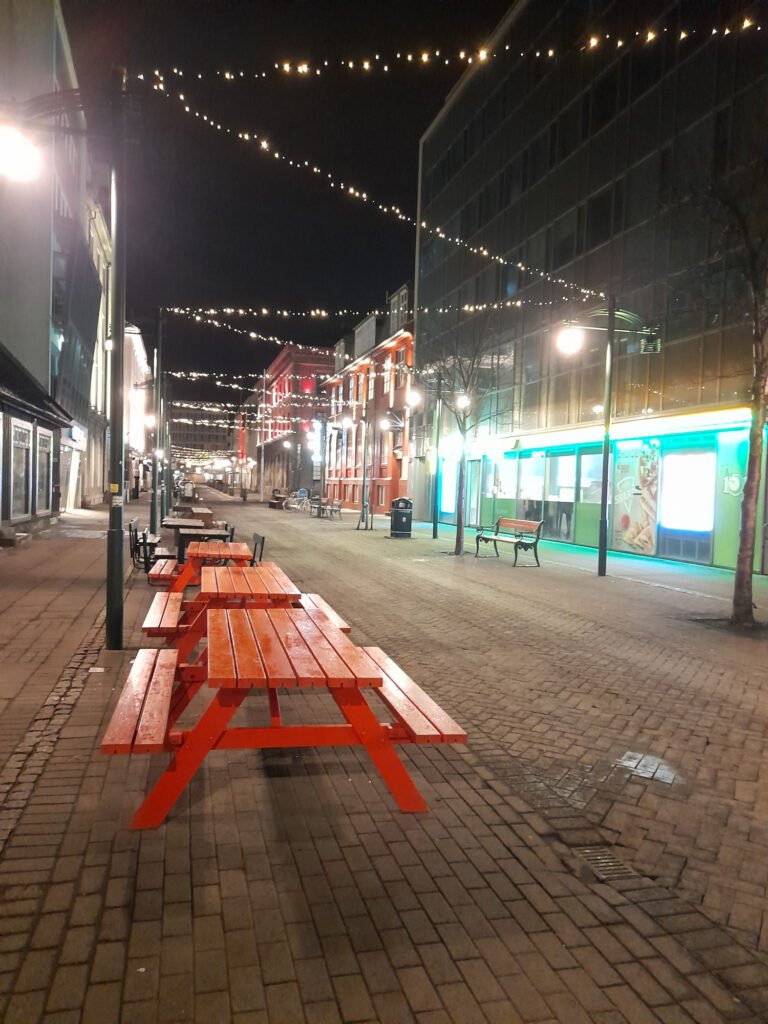
Con 3. Unpredictable Weather
One of the biggest reasons people visit Iceland is for its wild nature, right?
But that also means wild weather!
On the day of my South Coast Iceland tour, I woke up to a calm, perfectly blue-sky, snowy morning, and then was in the middle of a full-on blizzard an hour later!
It really is that crazy and unpredictable!
High winds are also notorious in Iceland, shutting down tours, closing roads, or even making it impossible to stand at viewpoints.
I experienced this on a tour of the Snaefellsness Peninsula. I really wanted to climb the Saxholl Crater, but the wind had other ideas (I could barely stand by the bus to take a photo!)
So, as you can see, flexibility is key. On most days, my plans had to change (or at least adapt) last-minute, which is just part of winter in Iceland.
And I get it. It’s frustrating to find that you can’t do something, especially when you have a short amount of time in Iceland, or if you’re travelling solo and don’t have anyone to bounce back up ideas off.
But in my experience, I actually learned to love Iceland’s unpredictability!
As long as you go with a flexible mindset and an openness to anything, you will slow down and find joy in unexpected moments. I promise.
Katie’s Top Tip: Always have a Plan B. If your glacier hike gets cancelled, know which museum, hot spring, or café you’d love to try instead. That way, bad weather doesn’t mean a wasted day, but an opportunity to explore a completely different side of Iceland!
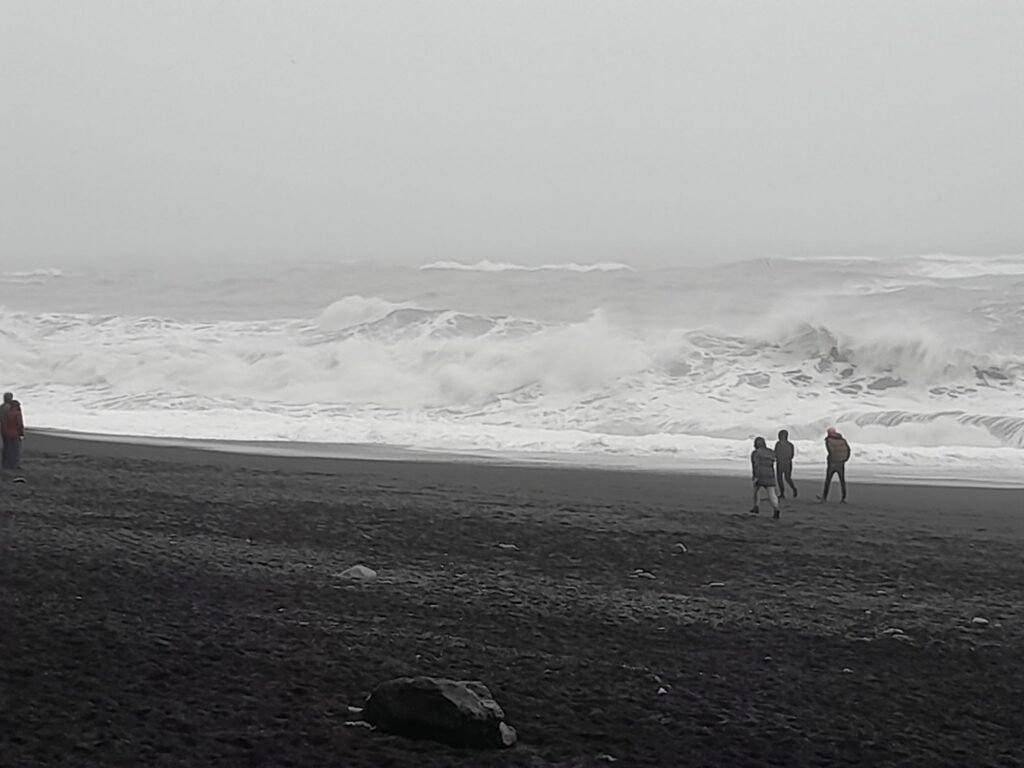
Con 4. Limited Access to Some Attractions
A lot of Iceland is simply off-limits in winter.
The famous Highlands close down almost completely, most hiking trails are buried under snow, and routes to remote areas like the Westfjords are dangerous or impossible to reach.
And even some of those must-see attractions that are open can be tricky/dangerous in winter if the paths are still icy.
When I visited the famous Strokkur geyser in the Golden Circle, I kid you not, it was like an ice skating rink!
(To this day, I still don’t know how I managed not to fall over!)
But that doesn’t mean winter in Iceland isn’t magical. You just need to focus on the parts of the country that are accessible.
The Golden Circle highlights, like Thingvellir and Gullfoss, the black sand beaches near Vik, the Blue Lagoon, and day trips to glaciers like the Jökulsárlón Glacier Lagoon are all (generally!) accessible in winter.
Katie’s Top Tip: Base yourself in Reykjavík and use tours to reach the highlights safely. It’s the easiest way to balance winter’s limitations while still seeing the best of Iceland!
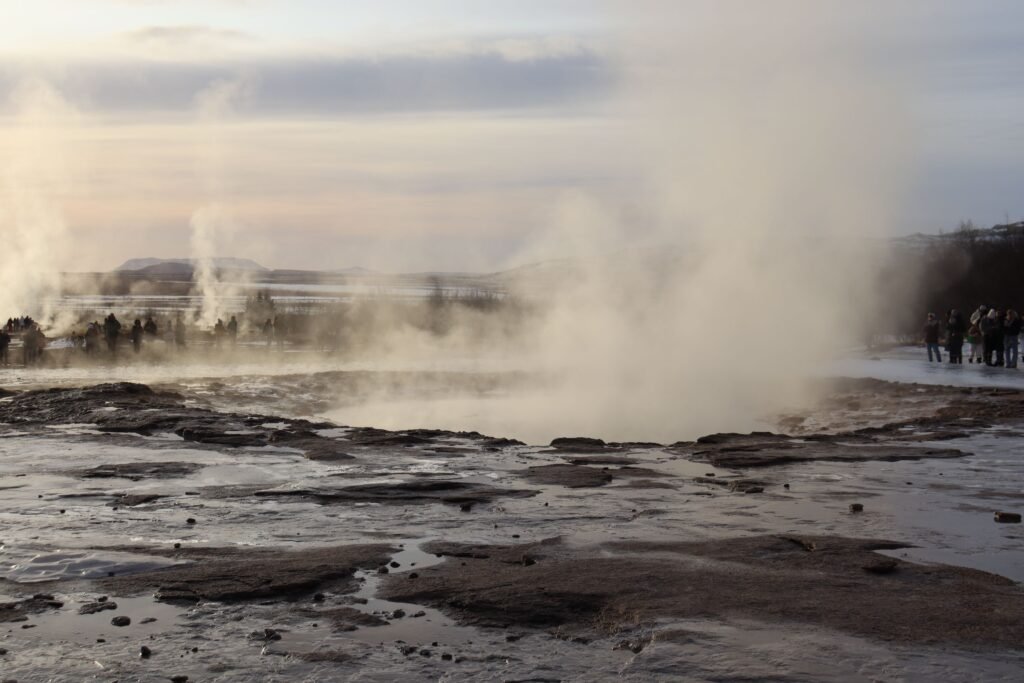
Con 5. The Loneliness Factor
I’ve not seen anyone talk about this, but travelling in Iceland in winter can feel incredibly isolating, especially as a solo traveller.
With long, dark nights and fewer tourists around, it’s not like being in Lisbon or Dubrovnik or Rome, where you can make instant friends at a bar.
I’m naturally very introverted, so to be honest, this didn’t bother me too much. But I know other travellers who have really struggled with this, so I had to mention it.
Guided tours (especially small group guided tours) make it very easy to meet people for the day and get a bit of connection, even if you then part ways.
This is how it was for me at the Blue Lagoon. I met a group of amazing girls and was so grateful to get to experience the Blue Lagoon with them! And when we parted ways later, I left with some amazing memories (and some great photos of me with the Icelandic Horses!)
Katie’s Top Tip: Plan one or two social activities into your trip to Iceland, if that’s your thing. Whether that’s a food tour in Reykjavik or a northern lights small group tour.

Safety As a Solo Female Traveller in Iceland
Iceland consistently ranks as one of the safest countries in the world, and sits at #1 on the Global Peace Index, which is why so many women choose it for their first solo trip.
But safety definitely isn’t just about crime rates. Instead, it’s about how safe and confident you feel in a place.
And things like unpredictable weather, slippery pavements and long stretches of darkness can definitely chip away at that solo travel confidence if you’re not prepared.
That’s why I wrote a full guide to whether Iceland is safe for solo female travellers, that dives a lot deeper into this topic, which you should definitely check out before you visit Iceland in winter!
Katie’s Top Tip: Carry a pair of lightweight ice grips for your boots. They’re cheap, pack flat and made a huge difference in how secure I felt walking on icy streets during my trip to Iceland in winter.
The Best Ways to Experience Iceland in Winter
Tours Vs Driving
When you start planning your trip to Iceland, the first question you need to ask yourself is whether you’ll hire a car or stick to guided tours.
Iceland in winter looks dreamy in photos, but the roads are more often than not treacherous with ice, packed snow and unpredictable storms.
So, unless you’re an experienced winter driver, I definitely wouldn’t recommend hiring a car solo in Iceland in winter.
Personally, I skipped the driving entirely and booked small group tours for every day of my 5 days solo travelling in Iceland.
And it was the best decision I made!
It meant I could actually relax and enjoy the landscapes instead of focusing on driving, and also made me feel so much safer as a solo female traveller.
Tour companies in Iceland are pros at handling the unpredictable conditions, and they’ll always cancel or reroute if things get unsafe (which is super hard to judge on your own, when you don’t know the conditions or the area!)
Katie’s Top Tip: Tours also give you a group of fellow travellers to chat with, if that’s your thing! And in my experience, this definitely eases the loneliness of solo travel.
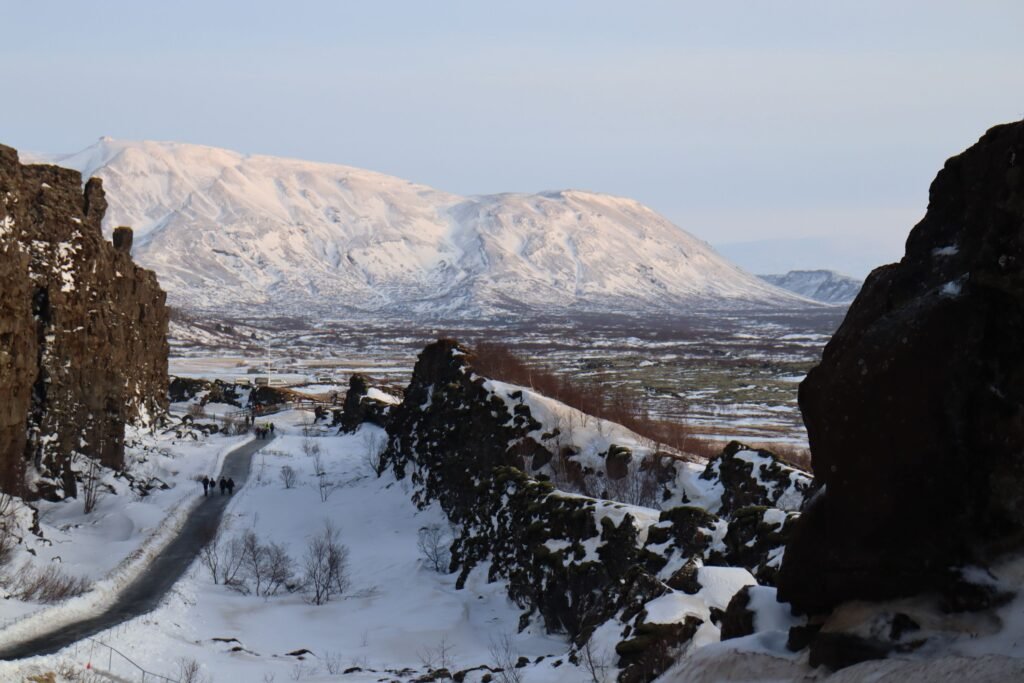
Choosing Your Base
Another big decision is whether you base yourself in Reykjavík or on the outskirts/in the countryside.
Because while staying in a remote cabin definitely sounds romantic, and staying on the outskirts of Reykjavík city centre is a lot more affordable, in winter, it can be very tricky logistically.
Snowstorms can cut off roads, and being unable to walk to shops, restaurants, attractions, or tour pick-ups will definitely cause a headache.
In my experience, staying in Reykjavík makes everything simpler.
The city centre is compact, safe and walkable (and regularly gritted and cleared of ice!)
There are also endless cafés, cosy restaurants, shops and pools to keep you busy even when the weather plays up.
Plus, most tours pick up directly from the city centre, making it a lot easier to get out and explore more of rural Iceland without the headache of dealing with logistics yourself.
Katie’s Top Tip: For a first solo winter trip, stick with Reykjavík as your base. Or, if you really want that more natural experience, choose a hotel that includes pickup and offers tours to take the logistics stress out of it.

Planning For Daylight
One of the biggest shocks for a lot of tourists is how little daylight you get.
In December and January, the sun doesn’t rise until around 11am and sets again before 4pm. (That’s only about five hours of usable light).
But the good news is that Iceland is magical in the dark!
The snowy streets of Reykjavík are lit by fairy lights, hot springs feel extra cosy when the world outside is so cold, and of course, the long nights give you the best shot at spotting the Northern Lights!
But for sightseeing, you’ll definitely have to be strategic. Guided tours are carefully timed to make the most of daylight, which is another reason they’re worth booking.
Katie’s Top Tip: Plan one main activity for each day and don’t try to cram too much in. Then, use the evenings for things that don’t rely on daylight, like hunting the Northern Lights, visiting a local pool, or exploring Reykjavík’s nightlife.

Is Iceland Worth Visiting in January?
The answer to, is Iceland worth visiting in January?, definitely depends on what you’re looking for from your trip.
January is deep winter in Iceland, with regular storms, freezing temperatures and very few daylight hours for sightseeing.
If you visit Iceland in January, definitely be prepared for the weather to disrupt your plans.
(And yes, you’ll need to pack more layers than you thought humanly possible to wear!!)
But January is also one of the most atmospheric times to see Iceland.
Frozen waterfalls, snow-globe-esque landscapes, and the possibility of catching the Northern Lights make it a once-in-a-lifetime trip!
Crowds are also smaller in January, which means you can enjoy popular spots like the Blue Lagoon and the Golden Circle without too many tourists.
Plus, prices for flights and hotels are a lot more affordable, which makes Iceland more accessible if you’re travelling on a budget.
Katie’s Top Tip: Make sure you pack waterproof layers, always give yourself flexibility with your itinerary, and book tours rather than driving yourself.

Practical Things No One Tells You About Iceland in Winter
As you now know, winter in Iceland comes with a fair few quirks that no one really mentions. Here’s an overview of the 5 most important things to know:
- It’s windy. Like, blow you off the Saxholl Crater, windy! And the wind chill makes temperatures feel much colder than they are, so remember to pack layers.
- The weather changes hourly. A calm morning can and does turn into a blizzard by lunchtime, so always have a backup itinerary.
- Food is expensive. Even a basic meal can set you back way more than you would expect in a restaurant. The Bonus or Kronan supermarkets will be your BFF for cutting costs here!
- Outdoor gear isn’t optional. Waterproof boots with good grip, a waterproof and windproof coat, gloves, thermals and crampons are essential to staying safe and comfortable in Iceland in winter.
- Cash isn’t necessary. Iceland is almost fully cashless, and your card will work everywhere touristy.
Katie’s Top Tip: Pack for comfort, safety and warmth on this trip, not for fashion. Icelanders dress practically, so no one will care what you look like. (Even if you do look like the Michelin Man in all your layers!)
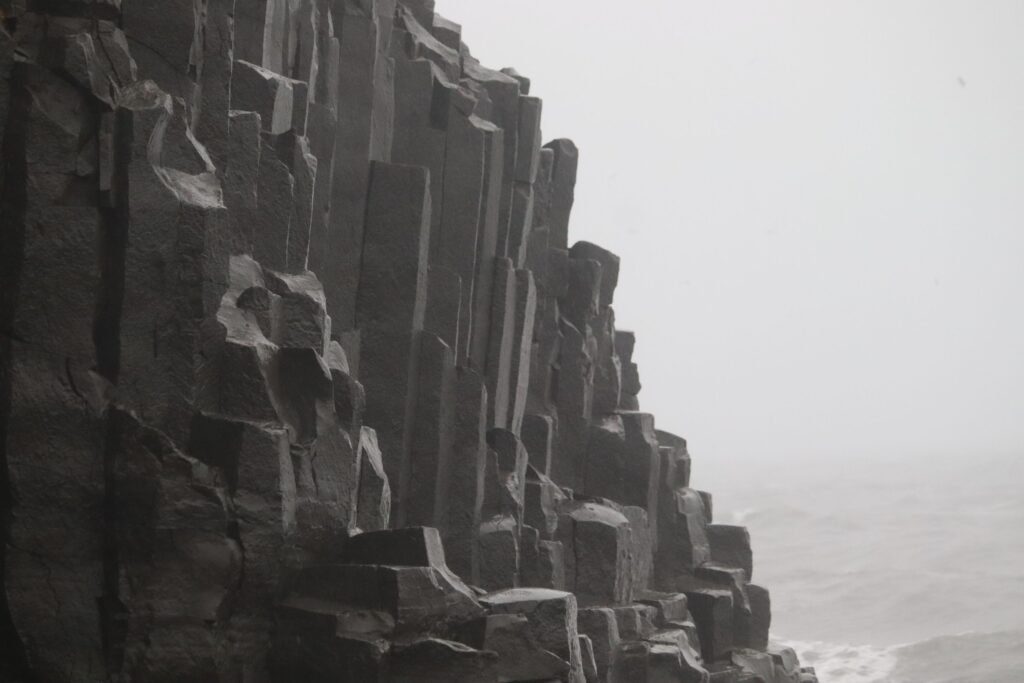
Final Thoughts: So, Is Iceland Worth Visiting in Winter?
So, is Iceland worth visiting in winter? I hope by now you know my answer is yes, absolutely!
BUT, only if you know what you’re signing up for.
Winter in Iceland is definitely not the easiest season.
The days are short, the weather is unpredictable, your plans will be forced to change, and you’ll sometimes feel like you’ve packed every single layer you own and it’s still not enough.
Yep, these are the “bad” things about Iceland you’ll see mentioned online, and they’re very, very real…
But those challenges are also exactly what make a winter trip to Iceland so unforgettable for so many travellers (me included!)
When you watch the sunrise over the snow-covered tectonic plates of the Golden Circle or finally see the Northern Lights for the very first time, you’ll understand why Iceland is so popular and why people keep coming back despite the wild weather!
Winter (especially January and February) removes the chaos of the big tourist crowds, and you can experience Iceland at its rawest and (in my opinion!) most magical.
But if you’re still on the fence, my best advice is to think about what you want most from this trip to Iceland.
If it’s long days of hiking or that dreamy Ring Road road trip you’ve seen all over TikTok, you’d be best off waiting for summer.
But if you want adventure and the chance to see Iceland’s landscapes at their most raw and dramatic, then yes – Iceland is 100% worth visiting in winter!
Read More About Travel in Iceland:
- The Ultimate Iceland Solo Female Travel Guide (For 2025!)
- Iceland’s Snaefellsnes Peninsula in Winter (Without a Car!)
- How to Visit Iceland’s South Coast in Winter (Without a Car)
- 7 Unmissable Day Trips From Reykjavik in Winter (No Car!)
- How to See Iceland’s Golden Circle in Winter (Without a Car)
- Iceland’s Blue Lagoon in Winter: What to Expect (and Pack!)
- 15 Iceland Travel Tips for Winter You’ll Be Glad You Know
- How Many Days Do You Need in Iceland in Winter?
- How to Spend 5 Days in Iceland in Winter (Without A Car!)
- 19 Prettiest Places in Iceland Every Traveller Must See
- Is Iceland Worth Visiting in Winter? What You Must Know
- Is Iceland Safe For Solo Female Travellers? An Honest Guide


5 Comments